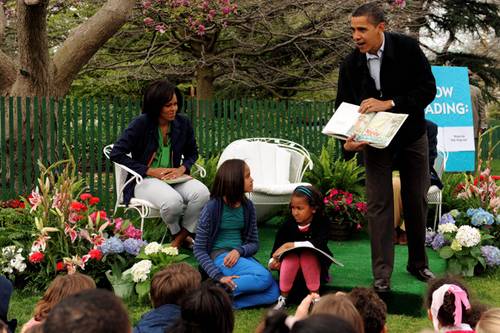Friends often ask: How to tell stories using picture books?
Should I read according to the words in the book, or can I express myself freely based on my understanding and needs?
If you only read the words in a book, what should you do if you encounter a picture with no words?
When reading picture books to children, do you need to ask questions or communicate with them in other ways?
Should you perform for your children with passion, expression, and gestures, or should you read quietly?
Should you read the book repeatedly and prepare thoroughly beforehand, or is it better to enjoy the first reading experience with your child?
What should you pay attention to if you are facing a group of children instead of just one or two?
When a child interrupts and asks a question while you are telling a story, should you answer or how should you respond?
Is it possible to intersperse a few comments while telling a story, or invite the audience to discuss it?
Before telling a story, how can you warm up and guide the audience to more easily capture their interest?
After telling the story, do you need to ask questions, make comments, or invite the audience to discuss?
…
There are actually many more questions like this.
To answer these questions, I invited a foreign assistant to show you the whole process of telling a story with a picture book. The picture book he used was the English version of Where the Wild Things Are.
The Wild Things Are, the Chinese version of this book has also been published by Tomorrow Publishing House (Chinese version link), I am honored to have been the translator of this book.
It’s a bit of a shame that my foreign assistant doesn’t speak Chinese (even a three-year-old in China can’t). However, he speaks excellent English, very standard American English. Even more remarkable is that he and his wife often tell stories to the children. They are both very skilled storytellers and are very popular with the children. Of course, this doesn’t prevent him from engaging in political activities in his spare time, but I don’t know much about this. What’s more noteworthy is that he truly loves the book “Where the Wild Things Are” and once said to his wife, “I am Max, and Max is me.” — To be honest, I do look a bit like him. — Perhaps because of this, the author and painter Mr. Sendak signed several books specially for him and his daughter.
Okay, enough of the small talk. Let my foreign assistant tell the story first.
Obama tells the story “Where the Wild Things Are” (Easter 2009, White House lawn)
How’s it going? My foreign assistant is pretty good, isn’t he?
There are many things to admire about his storytelling skills, but I think there are only two basic points:
First, when telling a story with a picture book, he should try to face the audience so that the children can see the pictures as much as possible (his wife kept reminding him of this, which shows that she is a good wife);
Second, you have to really like the story you tell.
When it comes to storytelling through picture books, Taiwanese compatriots have been ahead of mainland China for two or three decades. They have accumulated a wealth of valuable experience, particularly the “Little Big Reading Club” model and the “Caterpillar Children’s Philosophy Foundation,” which are both clear and systematic. The key points of these two models can be summarized as follows.
☆“Little Big Reading Club” model
1. Hold the picture book in hand and let the child appreciate it, and avoid pointing with your hands;
2. Find a suitable place to stand and take the audience into full consideration;
3. Stay true to the work and read the text directly without adding any embellishments. However, you may appropriately enhance the changes in voice by using different emotions and intonations.
Fourth, follow the principle of “read the words when there are words, and turn the pages quietly when there are no words” as much as possible, and do not interrupt the reading to add thoughts, comments or questions;
5. To avoid simply reading aloud, you can prepare a large number of picture books at the same time, and design and arrange some extension activities after reading.
☆“Caterpillar Children’s Philosophy Foundation” model
*
The main purpose is to inspire children to: ① be concerned about the interesting or confusing parts of the story; ② think and discuss further, and guide children to develop the habit of rational thinking.
*
“Interruption Method” (Collaborative Thinking Method): Be ready to discuss at any time. Books are just a medium to lead children into dialogue and discussion.
*
Pay attention to the spontaneous questions that children really care about; listen carefully to understand the real meaning; the storyteller is only a guide, not a standard answer or knowledge base.
Observing the storytelling style of Mr. Obama, the foreign assistant, from these two perspectives, it is not only seriously inconsistent with the “small and big” model, but also has a certain distance from the “caterpillar” model.
So how should we tell stories?
Haha, my opinion is relatively simple:Read it as you like, as you like, as you like. Just read it, just read it…

http://www.hongniba.com.cn/bookclub/demo/10006114/images/1.jpg
http://www.hongniba.com.cn/bookclub/demo/10006114/images/2.jpg
http://www.hongniba.com.cn/bookclub/demo/10006114/images/3.jpg
http://www.hongniba.com.cn/bookclub/demo/10006114/images/4.jpg